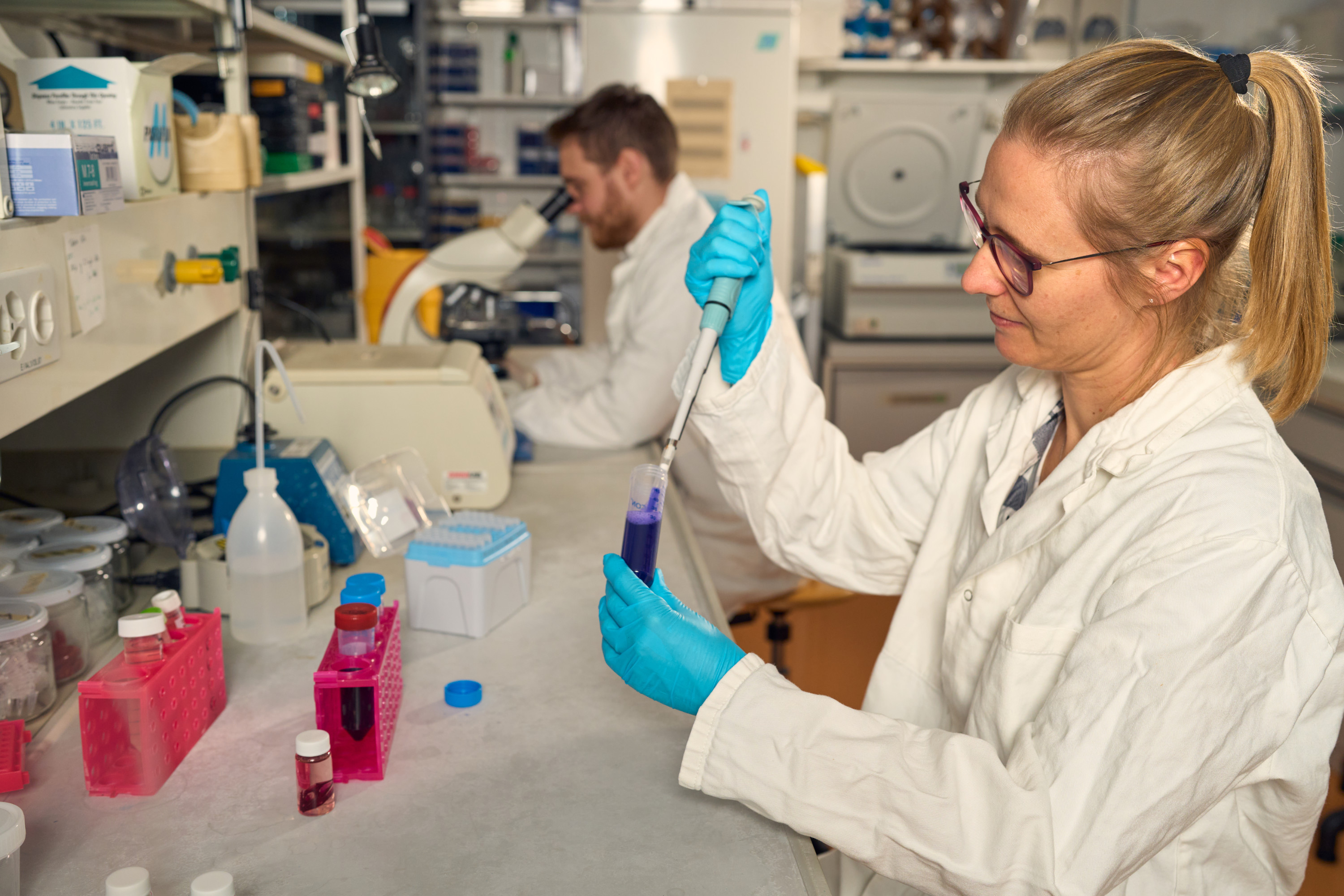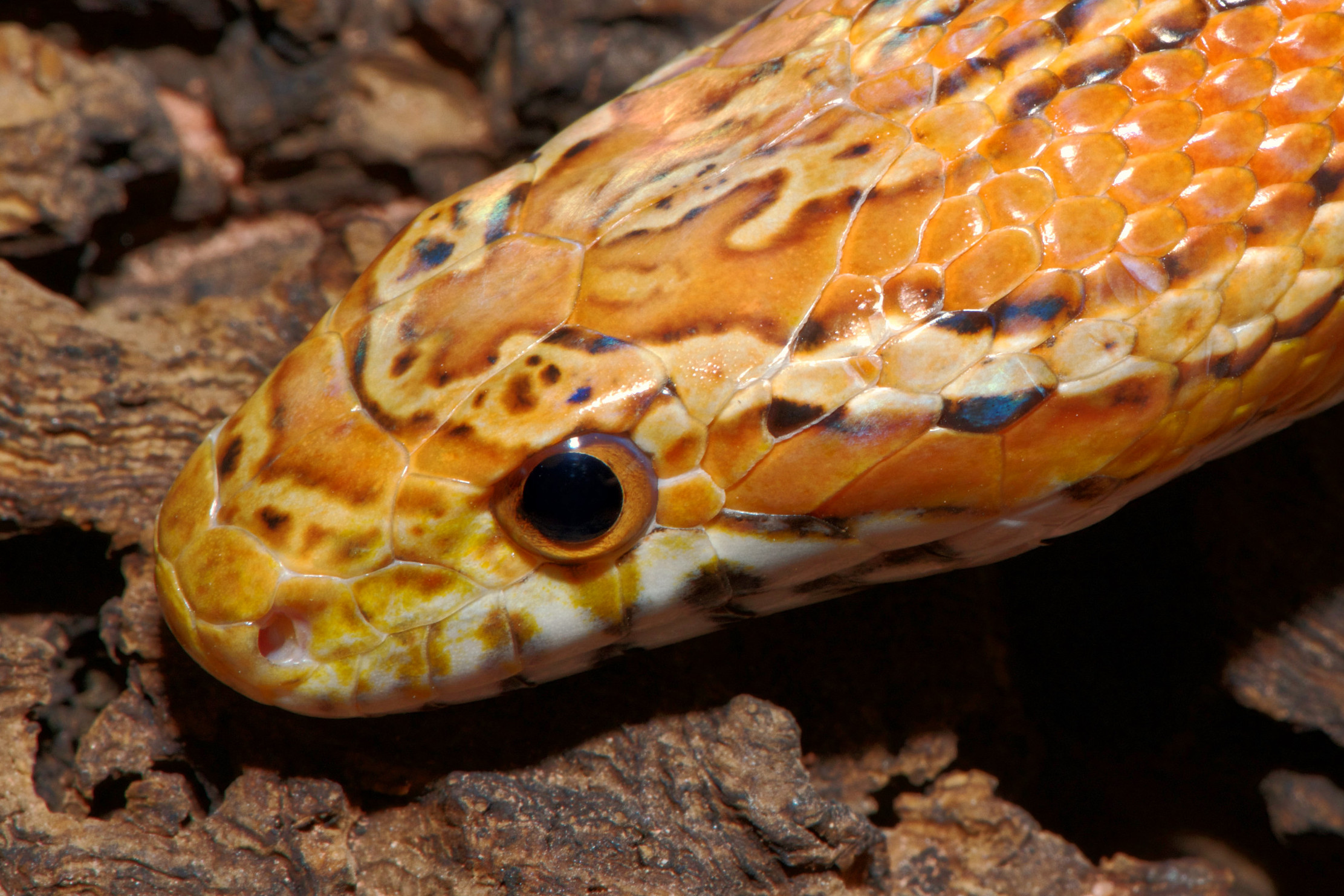How we do it
In the laboratory
We perform experiments with multiple state-of-the art techniques in molecular developmental genetics. Among others, we use in-situ hybridisation and immunostaining of both histological sections and whole-mount tissue samples. In addition, we routinely perform bulk RNA and single-cell sequencing of targeted tissues. Note that we also combine our RNAseq data with whole genome sequencing (Illumina, HiC, PacBio) to assemble and annotate chromosome-quality genomes. These genomes help us to identify the causative mutations of morphological traits on the basis SNP co-segregation in breeding families established with our animal models. Last but not least, we have produced the world’s first transgenic snakes and we now routinely use this approach in snakes and lizards.

Our animal models
The LANE also includes an exceptional, if not one-of-a-kind, animal facility directed by Dr. Athanasia Tzika. Indeed, most of our experiments with animals involve non-classical ‘exotic’ mammalian and reptilian model species that can teach us about unknown and exciting biological and physical processes generating this complex and diverse living world. Below, we succinctly list and introduce our main model species. You can search for our articles associated with each of these species by selecting the corresponding species name(s) in the list of keywords on our ‘Publications’ page.
For two general articles about new models species, please refer to:
- A Pragmatic Approach for Selecting Evo-Devo Model Species in Amniotes
Tzika & Milinkovitch
Evolving Pathways; Key Themes in Evolutionary Developmental Biology : 119-140 (2008) - Escaping the Mouse Trap; the Selection of New Evo-Devo Model Species
Milinkovitch & Tzika
Journal of Experimental Zoology (Mol. Dev. Evol.) 308, 4 : 337-346 (2007)

Imaging
We make extensive use of the latest technologies that facilitate volumetric imaging of biological samples at the cellular and tissue scales. We have also developed R2OBBIE-3D, a system for high-resolution 3D surface scanning of animal specimens and other biological objects.

Software Tools
Check here for software applications we make available to the community.
MetaPIGA v3.1
MetaPIGA is a versatile and easy-to-use software that implements robust stochastic heuristics (including the Metapopulation Genetic Algorithm, metaGA) for large phylogeny inference under maximum likelihood. MetaPIGA allows analyses of binary and molecular data sets under multiple substitution models, Gamma rate heterogeneity, and data partitioning. The software is for all types of users as it can be run through an extensive and ergonomic graphical interface, or by using batch files and console interface on your local machine or on distant servers. MetaPIGA is platform independent, and easily takes advantage of GPU and multicore computing.
LANE runner
A JAVA application developed to facilitate the annotation of de novo sequenced transcriptomes. It was extensively used for the Reptilian Brain Transcriptome project (Tzika et al.2011) and for building the subsequent Reptilian Transcriptomes 2.0 database (Tzika et al. 2015).
Resources for students
Here are resources we use during our course on dynamical systems.
- Evosimulator 2: a simple tool illustrating the power of ‘mutation + selection’. The code was implemented by Raphaël Helaers under the guidance of Michel Milinkovitch.
- Gray-Scott: one of the archetypes of the RD paradigm pioneered by the great Alan Turing. The code was implemented by pmneila and modified by Ebrahim Jahanbakhsh.
- The Lenz-Ising model and Game of Life simulators: the former was developed by Ernst Ising and Wilhelm Lenz in 1925, and the latter in 1970 by John Conway on the basis of principles invented/discovered by the great John von Neumann in the early 1940's. The code was implemented by James Headon under the guidance of ‘Meti’ Ibrahimi and Szabolcs Zakany.